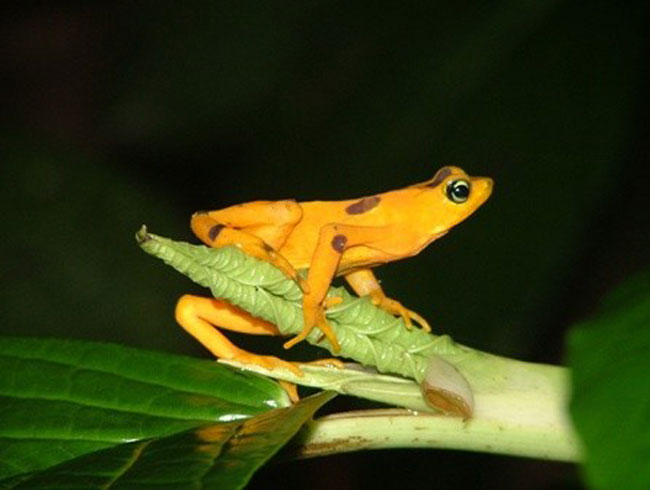More Frogs Dying as Planet Warms

Global warming is now believed to have set off a chain reaction wiping out entire frog populations and could possibly drive many species to extinction, a new study suggests.
Using records of sea-surface and air temperatures, researchers determined that harlequin frogs are disappearing nearly in step with the warming climate. At least 110 species of brightly colored harlequin frogs once lived near streams in the Central and South America tropics. Nearly two-thirds vanished in the 1980's and 1990's.
According to researchers, the Earth's rising temperatures increase cloud cover on tropical mountains, leading to cooler days and warmer nights. This creates the perfect growing conditions for chytrid fungus--a skin fungus that causes deadly infections in amphibians.
"Disease is the bullet that's killed the frogs," said study leader J. Alan Pounds of the Tropical Science Center's Monteverde Cloud Forest Preserve in Costa Rica. "But climate change is pulling the trigger. Global warming is wreaking havoc on amphibians, and soon will cause staggering losses of biodiversity."
The fungus kills frogs mostly in cool highlands or during winter, which had scientists thinking that low temperatures made it more fatal. However, this evidence shows it grows optimally between 63 and 77 degrees Fahrenheit, suggesting that it flourishes in warm years as well.
In 2004 the Global Amphibian Assessment reported that nearly one-third of the world's 6,000 species of frogs, toads, and salamanders face extinction.
But it's not just bad news for frogs, said Sam Scheiner of the National Science Foundation's ecology of infectious diseases program. As global warming and the emergence of infectious diseases continue, the two will pose an immediate threat to biodiversity and a growing challenge for humans.
Get the world’s most fascinating discoveries delivered straight to your inbox.
"The good news, if there is any, is the new findings will open up avenues of research that could provide scientists with the means to save the amphibians that still survive," study participant Bruce Young of NatureServe said. "If this cloud has any silver lining, that's it."
This research is detailed in the Jan. 12 issue of the journal Nature.
- Many Amphibians Threatened Worldwide
- How Global Warming is Changing the Wild Kingdom
- How Global Warming Can Chill the Planet
- Surprising Side Effects of Global Warming
- Longer Airline Flights Proposed to Combat Global Warming
- Group Seeks $404 Million to Save Frogs


